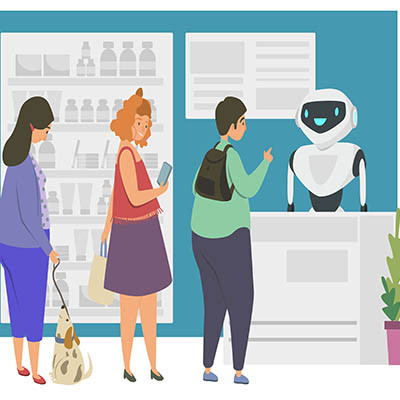Cloud technology has shifted the way that many businesses operate in their day-to-day, offering advantages that were once a business owner’s pipe dream. Of course, there are now different ways that businesses can embrace these advantages. Let’s compare your options to determine which one better matches up to your needs.
Cerberus IT Solutions Blog
Some companies have been in business for so long that they are still relying on legacy applications in their operational system. This could be for many reasons, but one of the biggest is that there is simply not a better option—at least, not in their eyes. Enter virtual machines, the solution that makes these kinds of businesses possible without severely compromising on network security.
Businesses are always leveraging the latest technology to overcome modern challenges, but the implementation of new tools often comes with new challenges of its own. Chief among these is determining whether or not the new tool actually solves a problem for your organization. The more deliberate your intentions for implementing a new tool, the more likely you are to see a return on investment for it. Here are ways you can make sure that all new technology is appropriate for your business’ needs.
Automation technology has many workers concerned about the future of their jobs. Computers are one of the many technologies that grow exponentially more powerful with every passing year, and these improvements lead to innovations that can save businesses tons of time and capital, but when applied to automation, does this come at the cost of jobs? Let’s see why workers in certain industries might be concerned about automation, as well as whether or not their concerns are warranted.
To stay competitive, businesses need to leverage any tools they can to optimize productivity. This includes what is often marketed as productivity software. Unfortunately, shopping for these tools can often lead you down the same rabbit hole, looking at the same products over and over, trying to determine which one is the best bang for your buck. Here are some pointers for finding the best productivity apps for your organization’s needs.
Remote work has thrown a wrench into the operations of countless businesses around the world, some more than others. While some employees have been able to adapt and make the most of the circumstances, workers with children at home might find themselves questioning their line of work or considering a change in careers.
A lot has been made about smart technology over the past few years with one major takeaway: it is far too risky to deploy. Security problems with Internet of Things (IoT) devices have been widely discussed and it has kept organizations from deploying technology that can really help their business. Let’s take a look at some of the technologies that your business can use to streamline your operations.
Artificial intelligence is one of the most intriguing technologies that has come down the pike. For the small and medium-sized business, it may seem more like science fiction than a solution to their business’ operational problems. Today, AI is more accessible for the SMB than ever, and today, we thought we would share with you a situation where the technology—designed to help out in a bakery—is being used to diagnose cancer.
Most modern businesses are using information systems to accelerate their profitability. In fact, small and medium-sized businesses are expected to spend over $650 billion in 2021. The question becomes what technologies are they spending their money on, and are they objectively the right investments to make? Today, we will unpack these questions by highlighting two investments that many businesses are pursuing.
When your business is in the position to add new technology, the process can be pretty confusing. You try to make good business decisions every time, but with technology, there are more variables that need to be weighed. Is the technology going to help the business? Is it the right technology for what I’m trying to achieve? What is the actual cost? Today, we will outline three strategies that can help you make better IT decisions.
For businesses that are looking to make large shifts in their operational strategies by adding new technology, they may be looking at some problems when the technology doesn’t take as advertised. Today, we will take a look at how technology, as useful as it can be, can also be problematic if the deployment isn’t handled properly.
The past year has been tough on many businesses. If they’ve learned anything it is the importance of staying flexible. The COVID-19 pandemic has created the need for organizations to move their operations offsite for fears of spreading the virus. With several different pharmaceutical companies now testing and pushing out vaccines for the virus, it seems that offices and other places of businesses will be opening back up, right?
With nearly everyone facing a recession in 2021, businesses are going to be looking to technology to keep their businesses afloat. The COVID-19 pandemic made businesses shift their priorities in 2020 and as the pandemic enters year two, these strategies will be equally important in 2021. Let’s take a look at three trends you will see businesses follow this year.
Businesses are in a tough spot right now, which makes their costs an even bigger issue for them to keep in mind. Luckily for businesses everywhere, however, many technologies are available now that can greatly benefit their operations—without being unattainable due to their price. Let’s consider five such technologies and strategies that can bring productivity and efficiency without sending you into the red.
Last week we took a look at some of the flagship smartphones that are on the market to give you a good idea of this year’s cream of the proverbial crop, but in 2020 smartphone innovation has taken a big leap forward. Today, we take a look at some of the devices that are pushing the envelope in the smartphone space.




















